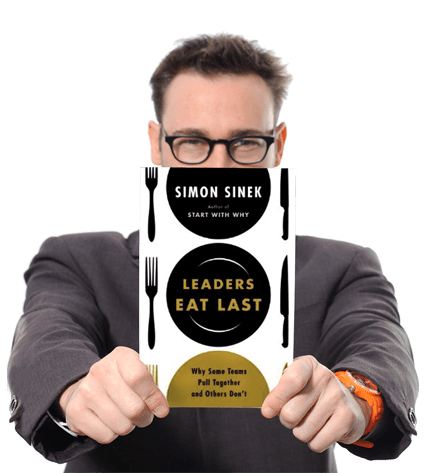I can not say enough good things about Leaders Eat Last (Why Some Teams Pull Together and Others Don’t) by Simon Sinek. I have read it once a year since it was published in 2014 and have watched the 99u talk he delivered about the concepts therein literally countless times. I have shared it repeatedly and will continue to do so. I love the concepts he teaches and he couldn’t be more correct about his overall concepts in this book. I have been a leader as long as I can remember and through other roles have always had a great curiosity about psychology and sociology. This book appeals to me on multiple levels. The leadership concepts should be understood by everyone currently in (or aspiring to) any type of leadership role. The neurochemistry basics that are discussed should be understood by everyone…on earth. I have often pointed people to the 99u talk by telling them they had to watch it, as it was like an owners manual to their brain (why you do what you do and why you feel what you feel.) Again, I can not say enough good things about this book.
Simon covers leadership and their responsibility to ensure teams feel like they are in an open, trusting, and safe environment. He refers to this as the “Circle of Trust” and explains this approach to a culture needs to be extended to the entire organization (not just the highest levels of the organization). When people feel they are safe, they are more creative, more productive, and healthier. He clearly explains the benefits of this culture and the difference in the majority of corporate structures and why they currently don’t lead this way and why so many leaders don’t approach things this way.
Sinek goes even further by explaining the human condition and the neuroscience behind feelings. He breaks it down into five main chemical reactions that occur in the brain, why they exist, and what stimuli cause the reactions. We are all humans (pack animals) and these systems are in place for a reason (typically the advancement, protection, and survival of the pack.)
The positive chemical reactions are Endorphins (hides pain, allows us to endure), Dopamine (gives pleasure to reinforce good outcomes), Serotonin (gives sense of pride and belonging), and Oxytocin (gives feeling of bond or love). These positive reactions are responsible for endurance, feelings of achievement, pride, love, satisfaction, and so many more positive emotions that foster a feeling of belonging, safety, and trust. They are good systems designed to bond a pack together to ensure they are marching toward the advancement of the group.
The negative chemical reaction Simon covers dates back to cave man times and it was a system designed to prepare us (as pack animals) to allow us to “Fight or Fly.” It put all of our senses on alert and got us ready to handle external threats. That chemical is Cortisol and in order to generate it our body shuts down non-critical systems. One of the first systems it shuts down is our immune system. Once the threat had passed, the Cortisol left our system and all the non-critical systems returned to their normal state. Since we aren’t typically facing external threats like the ones our prehistoric ancestors did, we tend to see Cortisol in today’s world in stressful situations. The stress of our current organizations has resources feeling unsafe and as a result, their Cortisol levels are spiked (and in turn their immune systems weakened.)
When people don’t feel safe, they stop looking out for the group and start focusing on their own survival. That is not good for a team or the organizations goals. When people are stressed, they start self serving and are less creative and productive. The approaches or concepts in the book are a better philosophy about how to lead vs. manage a group of people to ensure they feel valued, they feel trusted and trust back, they are willing to take changes and make mistakes. They feel safe. As a leader, it is our responsibility to ensure they feel this way. Everyone wins with this approach.
Let us all be the leaders we wish we had. – Sinek (Buy the book today, you will NOT regret it!)

One response
Thanks for the great article!